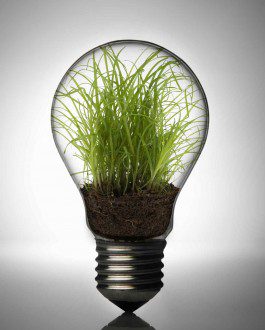By Sayer Ji
Contributing Writer for Wake Up World
Modern science is only beginning to catch up to the wisdom of the ancients: plants possess sentience and a rudimentary form of intelligence.
Plants are far more intelligent and capable than we have given them credit for. In fact, provocative research from 2010 published in Plant Signaling & Behavior proposes that since they cannot escape environmental stresses in the manner of animals, they have developed a “sophisticated, highly responsive and dynamic physiology,” which includes information processes such as “biological quantum computing” and “cellular light memory” which could be described as forms of plant intelligence.
Titled, “Secret life of plants: from memory to intelligence,” the study highlights one particular “super power” of plants indicative of their success as intelligent beings: “There are living trees that germinated long before Jesus Christ was born. What sort of life wisdom evolved in plants to make it possible to survive and propagate for so long a time in the same place they germinated?”
According to the researchers, plants “plants actually work as a biological quantum computing device that is capable to process quantum information encrypted in light intensity and in its energy.” This information processing includes a mechanism for processing memorized information. For example: “Plants can store and use information from the spectral composition of light for several days or more to anticipate changes that might appear in the near future in the environment, for example, for anticipation of pathogen attack.”
According to the study, “plants can actually think and remember.”
Moreover, plants not only possess a mechanism for information gathering and processing, but appear to exercise agency or “choice” vis-à-vis different scenarios:
“Different groups of chloroplasts and cells in the same leaf under identical constant and stable light, temperature and relative humidity condition have different opinions about ‘what to do’ in such conditions and tests different scenarios of possible future development.”
The study also offers an explanation for why plants absorb more light energy than is needed for photosynthesis alone:
“Another possible answer to the above question is a light training of young naïve leaves. Let’s imagine when young leaf or flower is emerging out of a plant, it would be nice for that leaf or flower to know about the conditions in which it is going to emerge. Older, more experienced leaves that actually are acclimated to outside conditions can train naïve emerging young leaves with the PEPS [photoelectrophysiological signaling] and cellular light memory mechanisms. This explains why plants possess a natural capacity to absorb more light energy than that required for photosynthetic CO2 assimilation. They need this absorbed energy in excess for optimization and training of light acclimatory and immune defenses.”
The authors leave us with the provocative conclusion:
“Our results suggest that plants are intelligent organisms capable of performing a sort of thinking process (understood as at the same time and non-stress conditions capable of performing several different scenarios of possible future definitive responses), and capable of memorizing this training.[source 1] Indeed leaves in the dark are able to not only “see” the light, [source 2],[source 3] but also are able to differently remember its spectral composition and use this memorized information to increase their Darwinian fitness.”
Why is this discovery important?
There are many reasons why recognizing the sentience and intelligence of plants may have positive implications for the future of humanity. For one, it helps us all to transcend the dominant worldview that non-human life forms are best defined in strictly mechanistic terms, and that attributing a “life essence” or consciousness to them is a form of magical thinking.
French philosopher Maurice Merleau-Pointy called this world view the “Great Object,” namely, that everything in the universe is compromised of material objects externally related to one another, and with consciousness merely an ephemeral subjectivity found only in humans.
To the contrary, if we open ourselves to the possibility that we are all participants in an interconnected web of life, as many indigenous peoples believed and actually experienced things to be, destroying the natural world simply to serve the essentially suicidal infinite economic growth model will be identified for the insanity that it is. If we recognize, as biologist James Lovelock proposed, the Earth as a whole should be looked upon more like a self-regulating organism (Gaia hypothesis), or as mycologist Paul Stamet envisions, that there is a fungi-based internet within the ground connecting all living things on the planet in an information-sharing network, we will be less likely to both perceive and to treat the natural world as “other” to be dominated.
Recognizing that plants, for instance, have consciousness, or that their simple presence in our environment has healing effects, reintroduces an element of wonder and mystery back into the experience of the natural world.
A perfect example of this can be found in the singing plants of the sacred forest of Damanhur. Damanhurian researchers in the mid-70’s reported using custom equipment to capture electromagnetic changes on the surface of leaves and roots and transforming them into audible signals. The researchers also observed that the plants learned to control their electrical responses, indicating they had some rudimentary awareness of the music they were creating. To learn more, watch the video documentary on GreenMedTV, or visit the Damanhur project website, celebrating its 40th anniversary this year.
Recommended articles by Sayer Ji:
- Better Than Chemo: Turmeric Kills Cancer Not Patients
- Mammography Is Harmful and Should Be Abandoned, Scientific Review Concludes
- Cinnamon May Be Superior to Ibuprofen for Menstrual Pain, Study Reveals
- “Killer Germs” Obliterated by Medicinal Smoke Smudging, Study Reveals
- Coconut Water: A New Alzheimer’s Disease Treatment?
- Turmeric’s ‘Smart Kill’ Properties Put Chemo & Radiation To Shame
- 6 Evidence-Based Ways Drumming Heals Body, Mind and Soul
- Tylenol Kills Emotions As Well As Pain, Study Reveals
- Research: Plants Cure Cancer, Not Chemicals
- Beet Juice Boosts Cognitive Function In One Dose
- 13 Evidence-Based Medicinal Properties of Coconut Oil
- 25 Cancer Stem-Cell Killing Foods That Are Smarter Than Chemo and Radiation
About the author:
Sayer Ji is on the Board of Governors for the National Health Federation and Fearless Parent, Steering Committee Member of the Global GMO Free Coalition (GGFC), a reviewer at the International Journal of Human Nutrition and Functional Medicine, and founder of GreenMedInfo.com – an open access, evidence-based resource supporting natural and integrative modalities.
In 1995 Sayer received a BA degree in Philosophy from Rutgers University, where he studied under the American philosopher Dr. Bruce W. Wilshire, with a focus on the philosophy of science. In 1996, following residency at the Zen Mountain Monastery in upstate New York, he embarked on a 5 year journey of service as a counsellor-teacher and wilderness therapy specialist for various organizations that serve underprivileged and/or adjudicated populations. Since 2003, Sayer has served as a patient advocate and an educator and consultant for the natural health and wellness field.
Visit GreenMedInfo online and on Facebook, or sign up for GreenMedInfo’s e-Newsletter.

If you've ever found value in our articles, we'd greatly appreciate your support by purchasing Mindful Meditation Techniques for Kids - A Practical Guide for Adults to Empower Kids with the Gift of Inner Peace and Resilience for Life.
In the spirit of mindfulness, we encourage you to choose the paperback version. Delve into its pages away from screen glare and notifications, allowing yourself to fully immerse in the transformative practices within. The physical book enriches the learning process and serves as a tangible commitment to mindfulness, easily shared among family and friends.
Over the past few years, Wake Up World has faced significant online censorship, impacting our financial ability to stay online. Instead of soliciting donations, we're exploring win-win solutions with our readers to remain financially viable. Moving into book publishing, we hope to secure ongoing funds to continue our mission. With over 8,500 articles published in the past 13 years, we are committed to keeping our content free and accessible to everyone, without resorting to a paywall.









